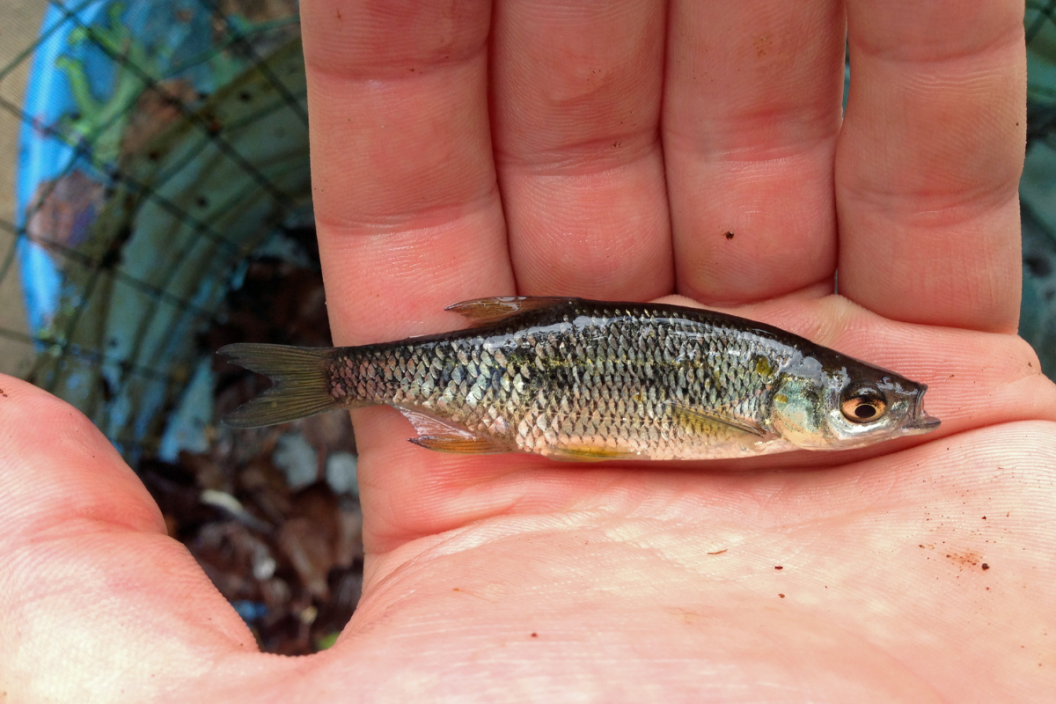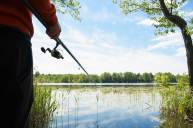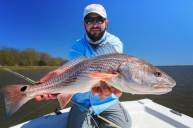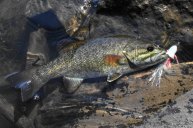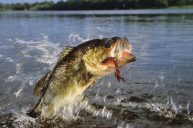We buy and use fishing baits based on many things, and a lot of times small baitfish just get lumped together into the family we collectively call "minnows." But learning a little more about a specific kind of these diminutive fish could pay off, because one of the most irresistible patterns found in nature is based on the golden shiner's dark green, white, and gold coloration. Everything from soft plastics to hard-sided crankbaits mimic this little fish for the pursuit of the largemouth bass. In truth, many other aquatic animals survive based on its availability.
The golden shiner has a special place in the hearts of bass-angling enthusiasts. Most of us got to know the shiner in the ponds, streams, and lakes where we first learned to cast. We may have seen a bass attack a group of shiners in the water, and we learned what it meant when you see a bass feeding: Cast there!
Because the golden shiner has a fantastic track record of success as a live bait option for bass fishing, it has been introduced outside of its original range. We'll zoom in a bit more on this small, unassuming fish that catches largemouth bass with the best of 'em.
Get to Know Golden Shiners
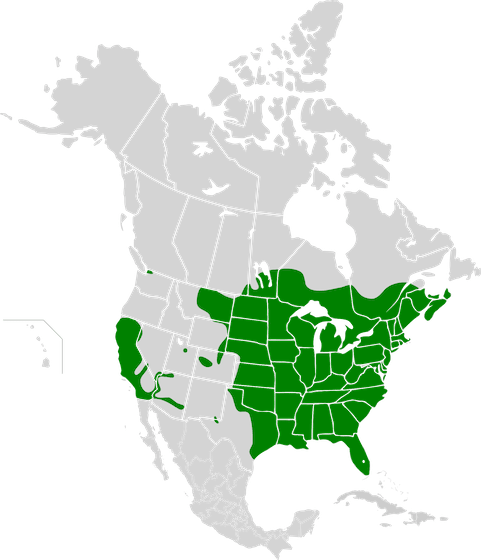
Cephas, CC BY-SA 4.0, via Wikimedia Commons
Golden Shiner Distribution
The golden shiner's original range includes much of the Great Lakes, the Atlantic and Gulf Coast regions, and the Mississippi River and its drainage. The golden shiner stretches from Nova Scotia and the New England states, south to Texas, and across the nation to the Dakotas.
Through non-native introduction, this baitfish now has a home in many, if not all, western American states. It does not exist in Alaska or Hawaii. Ask any top Florida bass fishing guides; probably 90 percent of the Sunshine State's 10-pound plus largemouths are taken on golden shiners as live bait.
Habitat & Behavior
As kids, we used to take a seine net into the local stream to catch everything from softshell crawfish to creek chubs, but the golden shiners were the ones that most caught our eye. They tend to live in slower waters of ponds, lakes, and river backwaters and can be found in more significant numbers around weed beds and vegetation that provide cover.
This same thick vegetation that gives them safety is also the same place where they will deposit their extremely sticky eggs, sometimes over 200,000 or more at a time. This prolific breeding behavior is one of the biggest reasons why this species is so attractive as prey.
Golden shiners tend to school up with other species. They are often seen feeding alongside lake chub, suckers, and other similar minnows with whom they share the waterway.
This species, in particular, is sensitive to an alarm substance given off by certain smaller minnow species known as "Schreckstoff." When one golden shiner is attacked and its skin is broken, specific scent release cells are activated that warn others of the same species that a predator is nearby and feeding. This may be why golden shiners seem to be there one moment and gone the next.
How to Catch Golden Shiners
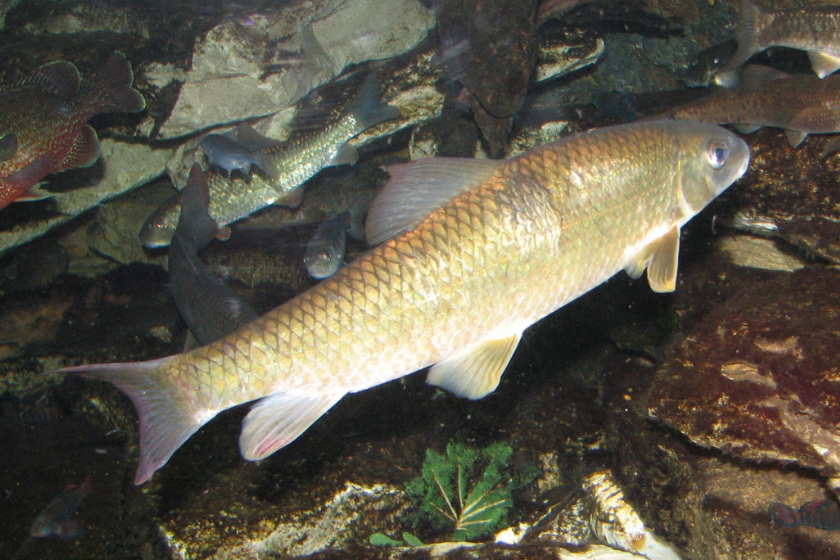
Ltshears, Public domain, via Wikimedia Commons
With golden shiners, there is more than one way to catch them to use for bait, be it with a casting net, a seine net, or even by hook and line.
Probably the most popular way to do it is by using a casting net, which can be quite enjoyable. One of the main reasons this method is so productive is that it is pretty simple to approach a school of shiners and get within range to launch your net. The bigger the group of fish, the bigger the catch, and the more bang for your buck.
Catching them on ultralight tackle is an excellent way to whet your appetite for the larger fish you will target after you catch the shiners. Micro-diameter monofilaments in the 2- to 4-pound test range work quite well, along with small hooks way down to the small #10 to #12 sizes.
The Best Bass Bait Ever
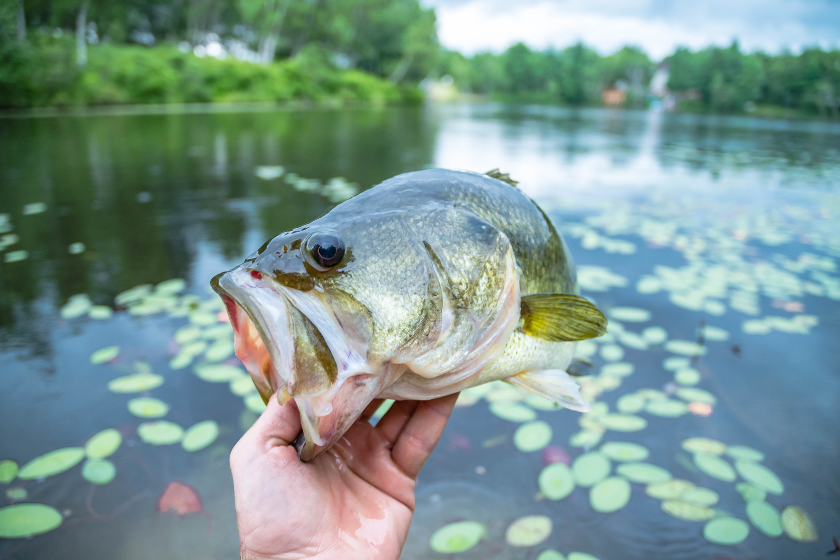
michaldziki via Getty Images
Like any live bait fishing, there are many ways to rig golden shiners for bass fishing. A 6' 6" heavy action casting rod and a baitcast reel loaded with 20-pound fluorocarbon works well. Circle hooks in the 1/0 or 2/0 size are the best option for rigging golden shiners.
Ask three people, and you will get three different answers as to how to hook your shiner to keep it lively in the water. More often than not, most folks hook them through the lips. They can swim quite well when connected through the body just behind the dorsal fin or above the anal fin, so those are wise options too.
One good rule of thumb is to use larger hooks with larger shiners in the three- to the four-inch range, and smaller hooks if they are less than three inches in length.
Some folks swear by letting the bait swim freely in and around the cover they are fishing, without a float or bobber, and keeping a hands-on approach to be ready for thundering strikes. Others still live and breathe by fishing golden shiners under a bobber, preventing them from going too deep in the water column. One method I've come to love, but may seem a bit abnormal, is to use small colored balloons in place of a bobber. They stick out well on the surface, especially among vegetation, and really get moving when the shiner detects a bass in the area. That serves as my warning signal, and I can anticipate a strike if it happens.
Of course, plenty of swimbaits and crankbaits are painted to mimic the coloration of a golden shiner, but then it's up to the angler to make the action happen.
Whichever way you decide to do it, just know that golden shiners have been a favorite among bass anglers for years, and that's not showing any signs of slowing down. Tried and true, the golden shiner catches fish, and ignoring them would lead you to miss out on what could be a massive day of bass fishing.
Please check out my book "The Hunter's Way" from HarperCollins. Be sure to follow my webpage or on Facebook and YouTube.
